Futures Trading: 4 Steps to Getting Started
Options give the contract holder the right — but not the obligation — to settle the contract. Investors should have a basic if not thorough understanding of how futures trading works before they begin. Knowing the benefits and drawbacks can spell the difference between success and loss. Futures contracts offer the possibility to manage risk by anticipating upcoming events that can change market prices. This higher leverage allows investors to gain higher profits by having less equity.
Currency or forex trading involves making money or hedging risk in foreign exchange rate changes. Dollar currency futures, there are also e-Micro Forex Futures contracts that trade at one-10th the size of regular currency futures contracts. While much has changed as forwards have become standardized as futures contracts and exchanges offer ever-more-sophisticated products, the basics remain the same. Below, we guide you through the kinds of futures, who trades them, and why, all while showing that you don’t need to get on horseback to beat news of a grain-filled ship arriving to gain from these investments. According to Statista, the number of futures contracts traded globally has grown by 142% over the past decade, to 29.32 billion in 2022 from 12.13 billion in 2013.
Motley Fool Investing Philosophy
If stocks fall, they make money on the short, balancing out their exposure to the index. Conversely, the same investor may feel confident in the future and buy a long contract – gaining a lot of upside if stocks move higher. https://www.cryptominer.services/ Using the thinkorswim bid/ask price ladder, enter the underlying symbol to find and select the specific futures contract you want to trade. Next, select your price level, confirm the order details, and submit the order.
Usually, the futures exchanges’ initial margin amount is around 3% – 10% of the underlying contract value. It is much lower than an equity position where the margin account required is 50% or more of its total value. One of the main benefits of futures contracts for investors is that investors can trade significant sums of money compared to relatively small amounts invested. Large corporations can use futures as a hedge against the underlying asset’s price movements, where the aim is to prevent losses from rising prices. In most cases, these companies need large amounts of specific commodities in their production or manufacturing process to make their products or to operate. Whereas the futures exchange is the one setting the initial margin, your broker will require you to have additional funds in your account, called maintenance margin.
Please read the Risk Disclosure Statement for Futures and Options prior to trading futures products. Like with any investment, you should develop a plan for your futures trade before you place it. Once you understand your risk tolerance, identify a profit or hedge objective and an exit plan should the trade go against you. For traders who understand https://www.topbitcoinnews.org/ the risks of futures, here are the basic steps involved in the futures trading process. Before the expiration date, you can decide to liquidate your position or roll it forward. Watch this short video for details on initial margin, marking to market, maintenance margin, and moving money between your brokerage and futures accounts.
How to Trade Futures
We use “underlying asset” in the vaguest sense since investors trade futures for virtually all commodities, financial securities, and more. For many investors, futures contracts, with their different terms and trading strategies, can be daunting. But the learning curve hasn’t stopped increasing numbers of investors from entering futures markets in recent years.
- However, it can equally put you at risk of losing more money than initially invested.
- It may also be difficult to juggle and monitor expiry dates, especially if investors trade multiple contracts.
- At the end of every trading day, your position is marked to market.
- Buyers of both options and futures contracts can, in this way, close their position and benefit from a leverage holders’ position closing.
- Instead of buying an energy stock, for example, you could buy a futures contract for oil.
When you hear someone use the word « futures » in the finance world, they typically mean futures contracts. A futures contract provides terms for the delivery, or cash settlement, of a specified asset, such as stocks, raw materials, or products, at a specified date in the future. The value of the contract is derived from the value of the underlying asset, making futures a form of derivatives. Now that we’ve explored the basics, let’s put everything all together in a trading example using the E-mini S&P 500 futures. Say the S&P 500 index recently broke out to a new all-time high, and we want to fade the move, hoping to book profits on a retracement to the initial breakout area around $4,720.
Are futures right for you?
The trading plan could also include a stop-loss order placed 5% below the entry price to manage downside risk. The maintenance margin for that same contract is $1,400, which is set by the broker and is a required minimum on your account at all times. If the money on the account drops below $1,400, the trader must make an extra payment to return it to the initial margin. For example, the initial margin of one wheat futures contract is $2,500, which is a required minimum to open a trade on a futures exchange.
What are futures contracts?
It may also be difficult to juggle and monitor expiry dates, especially if investors trade multiple contracts. Finally, traders run the risk of having to take physical delivery of the underlying asset if they don’t close out or roll their positions into an offsetting contract by the expiry date. As its name suggests, a futures contract is a financial instrument through which a buyer and seller agree to transact an asset at a fixed price at a future date. Despite a futures contract providing the opportunity for the delivery of an asset, most don’t result in physical delivery but are rather used by investors to speculate on a security’s price or hedge risk in a portfolio.
Buyers of both options and futures contracts can, in this way, close their position and benefit from a leverage holders’ position closing. Because each market can be so distinct from each other, a futures trader typically focuses on one or two areas, similar to how a chef may specialize in baking or desserts. This allows the trader to have a deeper understanding of that market and may help inform their trading decisions.
A beginner’s guide to trading futures contracts
As interest rates rise, bond prices typically fall, and vice versa. Investors, fund managers, and financial institutions use bond futures to protect their portfolios against interest rate changes or to take positions based on their interest rate outlook. Futures could be useful, however, to invest in assets outside of standard stocks, bonds, and real estate investment trusts (REITs). Instead of buying an energy stock, for example, you could buy a futures contract for oil. Getting started trading futures requires you to open a new account with a broker that supports the markets you want to trade.
In the futures market, institutional investors may engage in hedging to protect their portfolios from adverse market moves or speculate on future price directions to enhance returns. Given the large volume of assets under management, institutional investors can significantly affect market prices through their trading activities. Market makers provide market liquidity by staying ready to buy and sell futures contracts at publicly quoted prices. Hedgers use futures contracts https://www.coinbreakingnews.info/ to mitigate the risk of price changes going too low when the time comes for them to sell an asset or increasing too much if they have to buy it later in the spot market. These traders include producers, consumers, or investors with exposure to the underlying asset who employ futures contracts to lock in prices, effectively insuring against price volatility. Hedge funds are managed pools of capital with wide latitude in generating returns for their investors.
They don’t want the underlying assets but buy or sell futures based on their predictions about future prices. Another benefit to futures trading are the short-selling requirements and tax benefits. Short selling is the process of selling assets that you’ve borrowed with the intent on buying it back later for less money. Futures trading allows investors to lock in prices for commodities, currencies, and financial instruments months or even years in advance, providing a critical tool for managing price risk and speculation. Institutional investors include professional asset managers, pension funds, insurance companies, mutual funds, and endowments. They invest large sums of money in financial instruments, including futures contracts, on behalf of their stakeholders or beneficiaries.
If the prices fall, the trader can offset the transaction, which means closing a transaction to realize the profits before the contract expires. One of the largest risk factors with futures is related to the margin requirements and price sensitivity. These contracts were initially created to help businesses navigate unexpected costs. Most investors think about buying an asset anticipating that its price will go up in the future. But short-selling lets investors do the opposite — borrow money to bet an asset’s price will fall so they can buy later at a lower price. Futures and futures options trading involves substantial risk and is not suitable for all investors.




